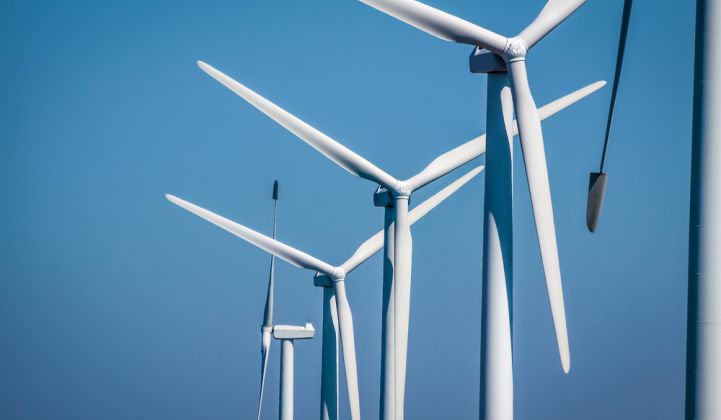A new $1.7 billion development fund could signal that Russia’s “sleeping giant” of a wind market is stirring from its slumber.
The 15-year fund was announced last month by the Russian Association of Wind Power Industry (RAWI), which counts ABB and Deutsche Windtechnik among its members, to “invest in the creation of wind power,” a press release said.
The announcement comes after Russian policymakers acted a couple of years ago to correct early missteps in the creation of a national wind market, according to Luke Lewandowski, research manager at MAKE Consulting, which is owned by GTM’s parent company Wood Mackenzie.
“They haven’t really installed much to date,” he said, but added, “The market is exhibiting some momentum.”
Russia first attempted to kick-start a wind market in 2014, but the effort failed to arouse much interest because of an overly stringent local content requirement of 65 percent.
Two consortia split the 86 megawatts on offer that year. Asset management firm Falkon Capital and Ukraine’s FWT, a small business born from the ashes of failed German turbine builder Fuhrländer Windtechnology, took 51 megawatts. The remaining 35 megawatts went to an alliance of Fortum, the Finnish power giant, with Dongfang Electric Corporation, the Chinese turbine maker.
The caliber of the turbine manufacturers involved indicates that “nobody was ready to step into the market,” Lewandowski said. “It’s quite a burden, 65 percent, especially in a market that doesn’t have clear visibility on sustained annual growth.”
Nevertheless, Dongfang committed to setting up blade production in Russia. And in 2015 politicians revised the local content requirement to make it more reasonable to new entrants. The 65 percent target was set back to projects commissioned after 2020.
For projects this year, meanwhile, the domestic content figure was set at 25 percent, rising to 45 percent for plants commissioned in 2018 and 2019. Despite this, there was again muted response when a further 610 megawatts of capacity was offered in 2016.
Only one consortium, made up of the Russian state-owned nuclear giant Rosatom and little-known Dutch turbine maker Lagerwey, came forward.
In any case, things appeared to improve this year in a third round, set for 1.65 gigawatts, when the more lenient local content requirements lured major turbine makers including Vestas and Siemens-Gamesa into the fray. Not all of the capacity was handed out, though. The remainder will be carried over to another round planned for next year.
Meanwhile, the projects awarded this year are due to come on-line in 2018 and 2019. “It’ll be interesting to see if they are able to execute under the 45 percent local content requirement,” said Lewandowski.
There are also question marks hanging over the fate of plant projects handed out in the first two rounds, since some of the turbine makers involved are hardly utility-scale players, and it remains to be seen whether they will be able to develop the wind farms they have won.
Indeed, there is a suspicion that some or all the early bidders may have entered the market precisely to ally themselves with industrial concerns, which could help bankroll manufacturing capacity that the turbine firms do not have at home.
This is pure speculation, however. “It’s a very opaque market,” noted Lewandowski.
Against this backdrop, making cash available via the RAWI fund is a promising sign that “could help accelerate development,” he said. “They need to get a track record going.”
Still, what happens in the next year or so will be important in revealing just how serious Russia is about developing wind energy.
Lewandowski said at least around a gigawatt of capacity would need to be on the block in 2018 for manufacturers to think about seriously investing in manufacturing capability. Many might be hoping that is the case.
Eastern European markets such as Poland are on the wane, and Russia, in theory, could represent a very significant growth opportunity in the region.
Today, the country gets more than 80 percent of its energy from fossil fuels, with the rest coming mostly from nuclear, geothermal and a tiny amount of solar. With just 15 megawatts installed as of last year, wind is right at the very back of the energy queue.



